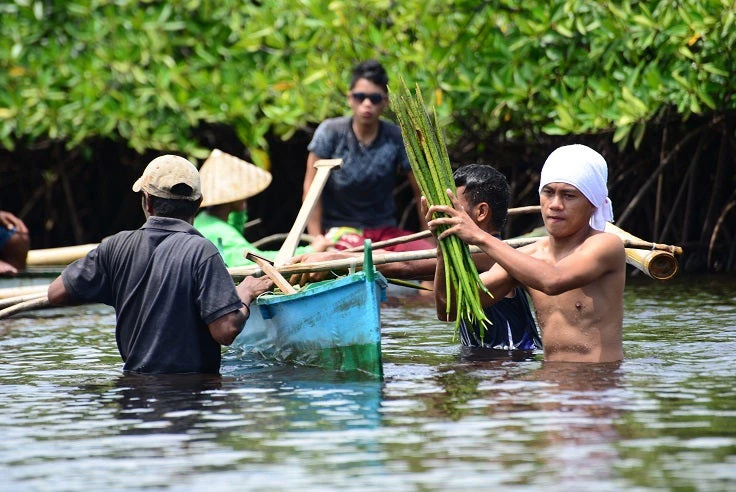
The North Atlantic hurricane season officially opens June 1, and there are predictions that storms this year could be worse than average again. That would be bad since last year was the costliest year on record for coastal storms. Communities and countries across the Caribbean and SE USA were particularly hard hit. The need for resilient solutions to reduce these risks is paramount.
There has been growing though largely anecdotal evidence that mangroves and other coastal habitats can play important roles in defending coastlines. Nonetheless it has been difficult to convince most governments and businesses (e.g., insurance, hotels) to invest in these natural defenses in the absence of rigorous valuations of these benefits.
So in 2016 The Nature Conservancy teamed with the World Bank and scientists from the public, private and academic sectors to identify how to rigorously value the flood protection benefits from coastal habitats. In short, we recommended that we value this ecosystem service by adopting tools and from the engineering, risk and insurance sectors and following an Expected Damage Function (EDF) approach. This approach assesses the difference in flooding and flood damages with and without coastal habitats such as mangroves across the entire storm frequency distribution (e.g., 1-in-10, -25 and -100 year storms).
Working together with the Institute of Environmental Hydraulics at the University of Cantabria “IH Cantabria’, we then tested this approach with the government of the Philippines to value the benefits of mangroves across that nation. We found that without mangroves the annual flood impacts to people and property would increase by ~25% in particular affecting some of the most socially vulnerable communities.
Now in a first, we have taken these approaches and applied them to mangroves globally – i.e., across more than 115 nations and 700,000 kilometers of coastline - with support from the German International Climate Initiative.
Mangroves around the world are protecting millions of people, and several billion dollars’ worth of property from flooding every year. The results of our work show the significant effect that mangrove presence has on coastal flooding extents and damages, both from extreme tropical cyclones and from more ‘every day’ events. If today’s mangroves were lost, 18 million more people would be flooded every year, an increase of more than 39%. The annual damages to property would increase by 16% and US $82 billion. In Vietnam, India and China alone, mangroves today protect over 12 million people from flooding. Together with the United States and Mexico, these countries currently save US $57 Billion in damages to residential and industrial property every year thanks to the mangroves they still have. We also find that, in general, the proportional effect of mangroves is actually higher for the less extreme, more frequent flood events. If mangroves were lost, 32% more people would be flooded by 1- in-10 year events, whereas 16% more people would be flooded by 1-in-100 year events.
We also worked with the Bündnis Entwicklung Hilft, an alliance of German-based aid groups, to combine our information on (flood) exposure reduction with estimates of Vulnerability from their WorldRiskIndex to identify the countries where mangroves might have the greatest benefits for overall risk reduction. These analyses highlight the importance of mangroves in particular for countries across western and south eastern Africa including Guinea, Mozambique, GuineaBissau, Sierra Leone and Madagascar.
These results illustrate how our natural ecosystems are often more valuable to us than we realize and that conserving them will directly benefit both people and nature. Between 1980 and 2005, 19% of the world’s mangroves were lost, resulting in increasing exposure to coastal hazards due to development and increasing vulnerability due to a loss of coastal protection. Conventional approaches to defending the coastline tend to focus only on built infrastructure, neglecting the potential to conserve natural habitats for their coastal defense value. Our studies aim to change that dynamic and show the tremendous value of keeping our mangroves and other coastal habitats in place for our own defense.
We are now working with both the public sector (e.g., disaster risk agencies) to use these values to better inform post-disaster and recovery spending and with the private sector (e.g., insurance) including firms such as Swiss Re and Munich Re to develop innovative financing tools to support habitat restoration based on their risk reduction benefits.
We believe that these rigorous, spatially explicit valuations of our natural capital open a wealth of new opportunities to provide benefits to people and nature.



Join the Conversation